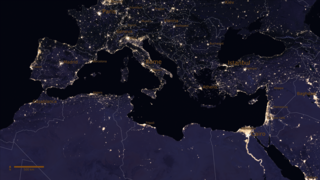Universe
ID: 30119
A spectacular new NASA/ESA Hubble Space Telescope image — one of the largest ever released of a star-forming region — highlights N11, part of a complex network of gas clouds and star clusters within our neighbouring galaxy, the Large Magellanic Cloud. This region of energetic star formation is one of the most active in the nearby Universe. The Large Magellanic Cloud, or LMC, contains many bright bubbles of glowing gas. One of the largest and most spectacular has the name LHA 120-N 11, from its listing in a catalogue compiled by the American astronomer and astronaut Karl Henize in 1956, and is informally known as N11. Close up, the billowing pink clouds of glowing gas make N11 resemble a puffy swirl of fairground candy floss. From further away, its distinctive overall shape led some observers to nickname it the Bean Nebula. The dramatic and colourful features visible in the nebula are the telltale signs of star formation. N11 is a well-studied region that extends over 1000 light-years. It is the second largest star-forming region within the LMC and has produced some of the most massive stars known. It is the process of star formation that gives N11 its distinctive look. Three successive generations of stars, each of which formed further away from the centre of the nebula than the last, have created shells of gas and dust.
Baby Bubbles
For More Information
Credits
Please give credit for this item to:
ESA/Hubble
ESA/Hubble
Short URL to share this page:
https://svs.gsfc.nasa.gov/30119
Mission:
Hubble
Keywords:
SVS >> HDTV
SVS >> Hyperwall
SVS >> Hubble Space Telescope
DLESE >> Narrated
NASA Science >> Universe
SVS >> Presentation
https://svs.gsfc.nasa.gov/30119
Mission:
Hubble
Keywords:
SVS >> HDTV
SVS >> Hyperwall
SVS >> Hubble Space Telescope
DLESE >> Narrated
NASA Science >> Universe
SVS >> Presentation











